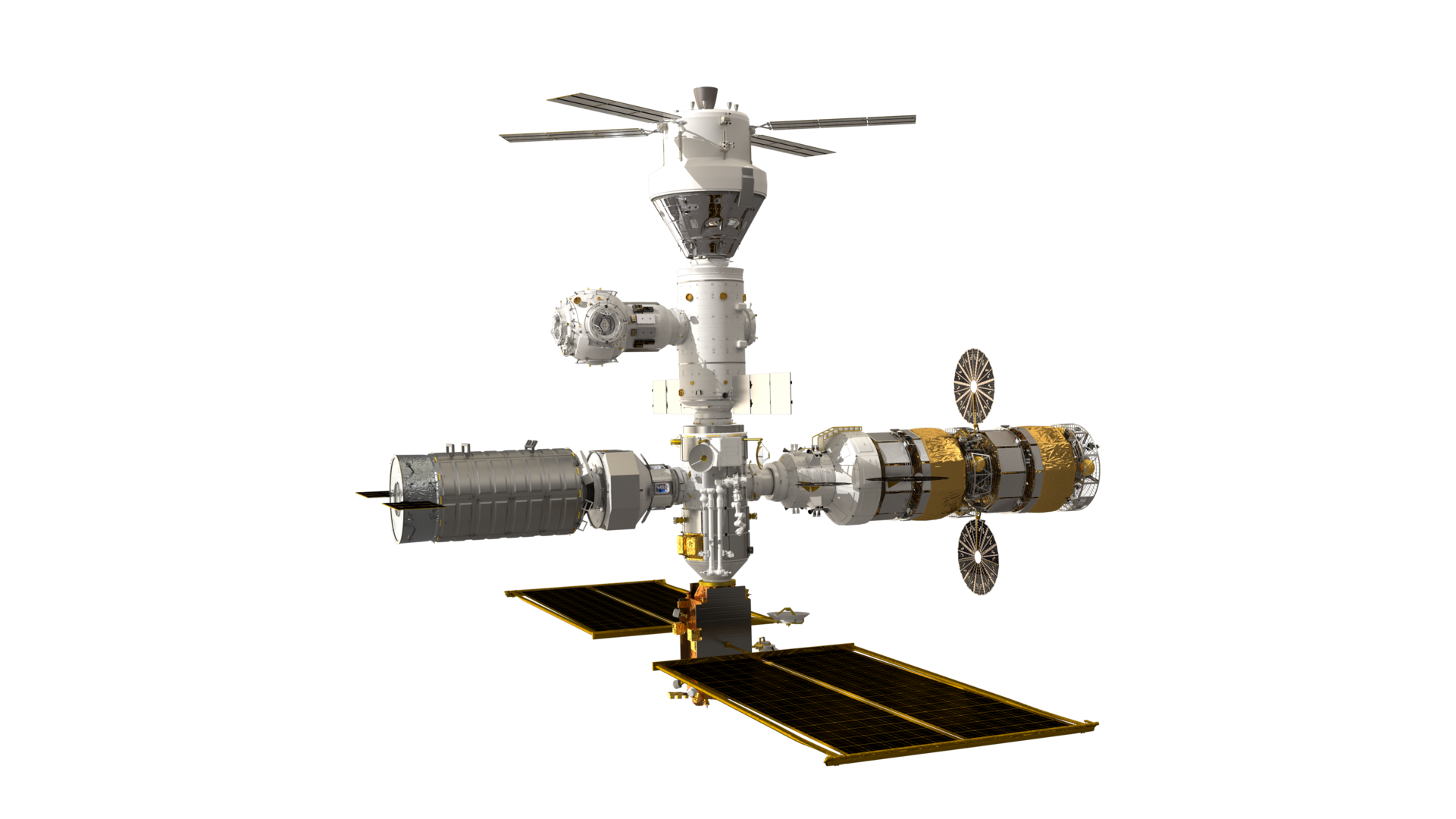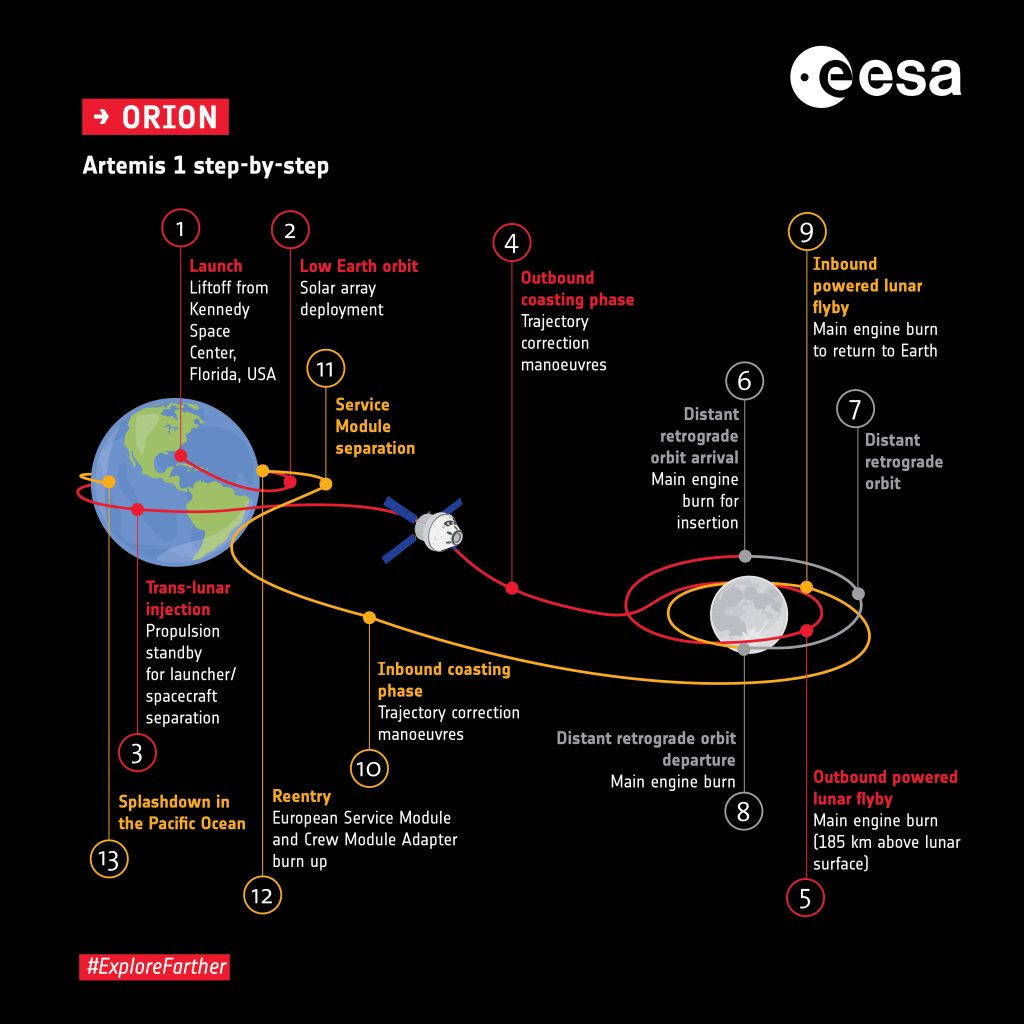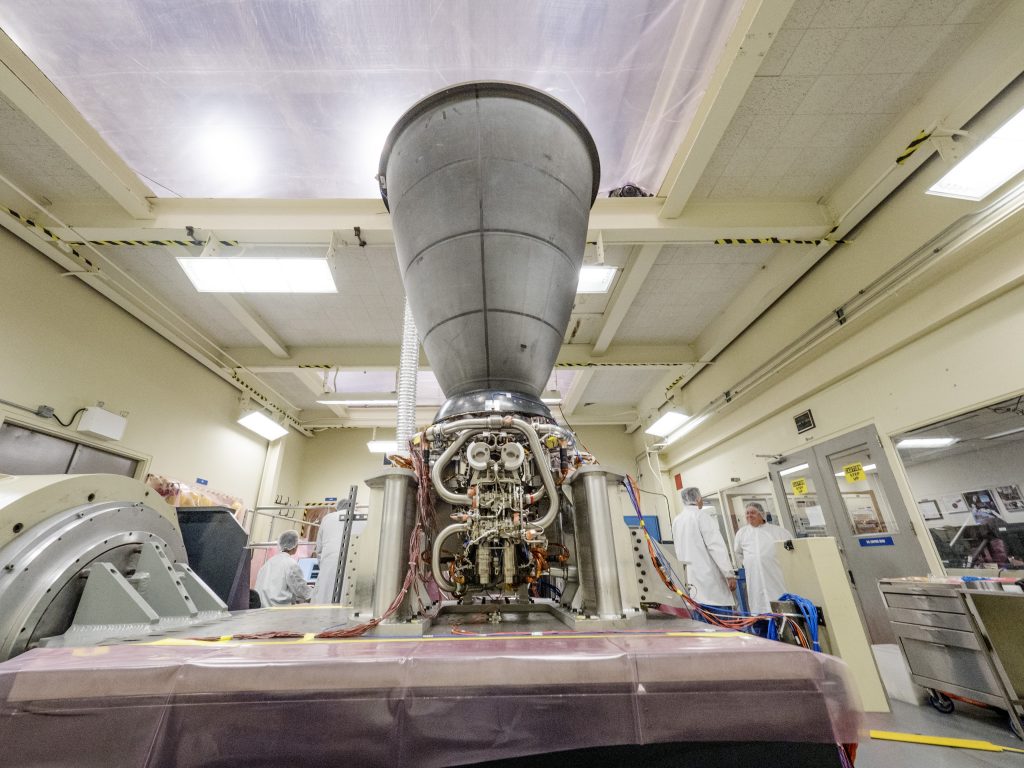Let’s look at what is in store for the European Service Modules and the Artemis programme to the Moon.
A first highlight has already occurred with the start of building the ESPRIT communications, refuelling and observatory module for Gateway, the first port of call for Orion. The ESPRIT hardware is being designed and assembled in Cannes, France, by Thales Alenia Space.

The year promises to kick off with a fiery moment as NASA fires up a Space Launch System stage in a “green run”. The rocket is fired up to test its full power – but without leaving Earth, staying firmly put for this test at NASA’s Stennis Space Center in Mississippi, USA. The upcoming hot fire test will fire all four of the stage’s RS-25 engines simultaneously for up to eight minutes to simulate the core stage’s performance during launch. After the firing at Stennis, the core stage for SLS will be refurbished and shipped by barge to NASA’s Kennedy Space Center in Florida.

At Kennedy Space Center, the Orion spacecraft for Artemis I will continue be processed for launch. This entails moving Orion to the Multi-Payload Processing Facility to fuel the European Service Module with propellants and other fluids the spacecraft needs for human spaceflight. After that Orion will be moved to the Launch Abort System Facility (LASF), where the Launch Abort System will be installed above the spacecraft.
After the LAS is integrated with Orion, the entire stack will be moved to High Bay 3 in the vast Vehicle Assembly Building, where it will be lifted and secured atop NASA’s Space Launch System rocket on its mobile launcher.
The completed SLS and Orion stack will be transported atop the mobile launcher on crawler-transporter-2 to Launch Pad 39B for lift-off in 2021 after dress rehearsal. Follow the two-week Artemis I mission right here for launch and flight operations news!

Preparing for second and third flight
In February we are planning an event to showcase the second and third European Service Modules being built up in Bremen, Germany, at the Airbus integration hall. A rare chance to see the two spacecraft hardware that will power astronauts around and to the Moon.
The second European Service Module, for Artemis II, will soon see its OMS-E main engine integration and completion of integration in Bremen, before moving into the system test campaign and then shipping to Kennedy Space Center. Inside the Operations and Checkout building the second European Service Module will be mated with the Crew Module Adapter and tested.

The third European Service Module will continue to be built up piece by piece, cable by cable and tank by tank, until it is ready to support the next Moon landing.
And more…
Meanwhile the so called long-lead items will start to arrive in preparation for the fourth, fifth and sixth European Service Modules. The actual contract signature for these modules is expected and some smaller hardware elements require longer production times so the industry gets a head start on these items in advance of the signatures and formal kick-off of production.
The fourth European Service Module is up next, and the start of the structure integration is set to begin later in 2021 at the Thales Alenia Space site in Turin, Italy, before its transfer to Airbus in Bremen.

 Automated Transfer Vehicle page
Automated Transfer Vehicle page ATV blog archive
ATV blog archive
Discussion: 3 comments
I spent most of my career in space communications – DSN and MSFN, specifically Apollo. I have tried unsuccessfully to find detail plans for Artemis comms. Can anybody point me somewhere?
Good question, and thanks for asking here! ESA’s operations network will support the Artemis communications, and NASA has an overview of their communications systems for Orion here: https://www.nasa.gov/feature/goddard/2020/artemis-i-demonstrating-the-capabilities-of-nasa-s-united-networks
Thanks for that helpful reply. I still look in vane for Deep Space comms geographic redundancy. For Apollo we had such redundancy using separate but linked DSN and MSFN facilities. I consider that such redundancy is absolutely vital for crewed flights. But maybe the NEN is intended for this. If so, there is no mention of such a role.